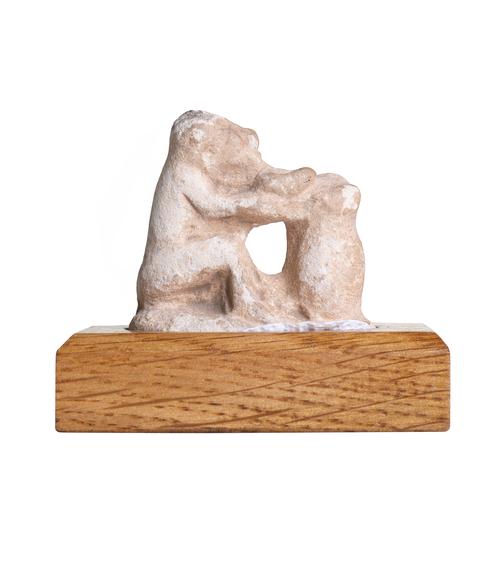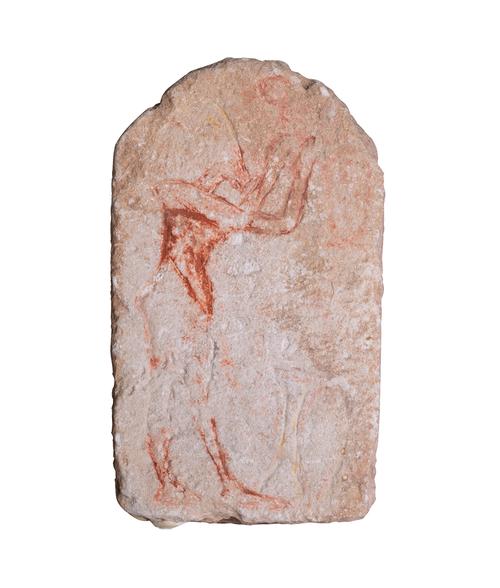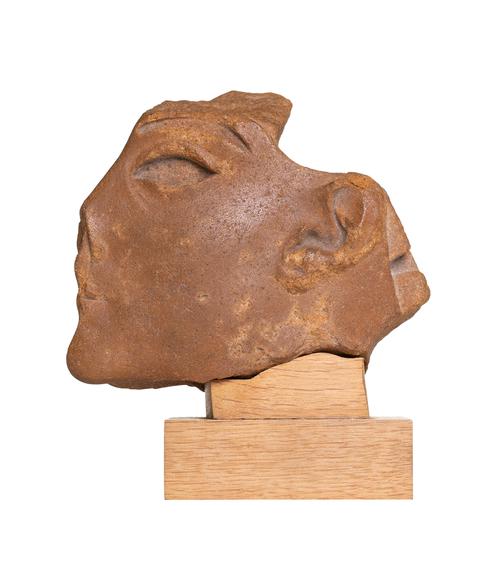
Monkey Figurine
Museum Number: UC028
This unusual painted limestone statuette shows a monkey with beer pot. Monkeys play an interesting role in Egyptian art – they were not native to Egypt but often kept as pets. Petrie found twenty three monkey figures in Amarna, some playing lyres, some riding chariots or eating and drinking. The figures have given rise to different interpretations with some scholars arguing that they were toys while others have suggested that they might have been caricatures of the royal family. One of Freud’s favorite objects was a statuette of Thoth as a baboon. His housekeeper Paula Fichtl noted his habit of stroking the marble baboon, as he did his own pet dogs.
Courtesy of the Petrie Museum of Egyptian Archaeology, UCL

Small stela of Akhenaten
Museum Number: UC012
This miniature stela is made from painted limestone and is crudely incised with the figure of Akhenaten before two stands of incense, with the sun disk above. Here Akhenaten here is represented with the Aten – the sun disk. In the so-called ‘The Great Hymn to Aten’, Akhenaten praises Aten as the creator and life-giver. Freud followed others in considering Atenism the world’s first monotheistic religion.
Courtesy of the Petrie Museum of Egyptian Archaeology, UCL

Profile
Museum Number: UC103
This fragmentary portrait almost certainly represents Nefertiti. The quartzite head would have been completed with the attachment of a crown, most likely the tall crown associated with a queen. Her eyes would have been inlaid with another material emphasizing the polychrome appearance. The restrained features suggest that the piece dates from the later years of Akhenaten’s reign.
Courtesy of the Petrie Museum of Egyptian Archaeology, UCL